| Report Type | Full |
| Peak(s) |
Cotopaxi - 19,347 ft Carihuairazo - 16,463 ft Rucu Pichincha - 15,497 ft Chimborazo - 20,549 ft |
| Date Posted | 07/16/2019 |
| Modified | 05/31/2021 |
| Date Climbed | 07/08/2019 |
| Author | Col_Forbin |
| Ecuador Volcanoes - Summer 2019 |
|---|
|
Thinking Back After climbing my first 6,000 meter peak, Huayna Potosi, in Bolivia last year, I knew that I needed to do more climbing in the Andes. For anyone interested in reading about a great introductory peak to higher altitude climbing, read my trip report about that experience below: https://14ers.com/php14ers/tripreport.php?trip=18718 Looking Forward - Ecuador Volcanoes 2019 For this trip, I had the company of my friends Peter and Shelly, which definitely added to the experience. As many of us know, some of the best experiences in the mountains are those shared with others. During the late summer of 2018, our group decided that Ecuador would be our destination for summer 2019. The plan was to acclimatize on Rucu Pichincha (4,696 meters / 15,497 feet) before moving on to Carihuairazo (5,018 meters / 16,463 feet) for additional acclimatization. The final and main objectives were Cotopaxi (5,897 meters / 19,347 feet), and finally Chimborazo (6,262 meters / 20,549 feet) - the highest point in Ecuador, and the furthest point from the Earth's center. The acclimatization plan seemed reasonable, and the goals attainable for budding high altitude mountaineers. Preparation As my experience climbing Huayna Potosi in Bolivia told me, training and preparation are both extremely important keys to success and safety in the mountains. I spent well over 6 months training for this trip, running on a daily basis and getting up to the mountains as much as possible to climb. Unfortunately my training was interrupted by a sprained ankle on June 5th, causing me to spend most of the month of June with my ankle and foot elevated. It was extremely difficult to sit still during this time. Within one week of the sprain, I tested the ankle out on Mt. Sniktau. This may not have been the wisest idea, but I was going insane spending my break from work on the couch and not taking advantage of our amazing 2019 spring snowpack. In the weeks before the sprain on June 5th, my partner Peter and I were able to make what we could of the spring season through the following climbs during the weekends: Flattop Mountain - Dragon's Tail Couloir Atlantic Peak - West Ridge Long’s Peak - Lamb’s Slide Mt Sherman - Winter Route Pacific Peak - Hawaii Couloir Sayre's Benchmark - Grand Central Blanca Peak / Ellingwood Peak - Standard with overnight at Lake Como Mt Parnassus - Watrous Gulch Mt Sheridan - Tripped like a klutz on the summit while walking towards snowline with my split board, causing the sprained ankle. Despite feeling like I lost a lot of fitness after my injury on June 5th, everything worked out fine with my ankle on the trip. Now, let's get to the actual experience. The Itinerary: Friday, June 28th - Fly out of Denver at 11:30 pm Saturday, June 29th - Land in Quito in early afternoon after layover in Panama City - check into hotel San Francisco in Old Town Quito. Sunday, June 30th - Acclimatization hike of Rucu Pichincha Monday, July 1st - Arranged transport from Quito to Ecuador Eco Adventure’s headquarters in Riobamba. Re-pack gear for Carihuairazo > transfer to refugio at 14,000 feet for Carihuairazo. Tuesday, July 2nd - 1 am wake up to climb Carihuairazo > return to Riobamba Wednesday, July 3rd - Transfer from Riobamba to Cotopaxi National park - hike to Jose Rivas Refugio ( 4,864 meters / 15,953 feet) Thursday, July 4th - Midnight start, summit Cotopaxi before sunrise > return to Riobamba Friday, July 5th - After some miscommunication regarding our itinerary, rest day at headquarters in Riobamba. Saturday, July 6th - Transfer to Chakana refuge near Chimborazo National Park. (Bring rope and draws if you stay here) Sunday, July 7th - Transfer to Carrel Refuge at 15,744, 11 pm wake up for summit attempt of Chimborazo Monday, July 8th - Return to Riobamba after failed summit attempt. Arranged transport to Hotel Antinea in New Quito Tuesday, July 9th - Tourist day in Mitad Del Mundo (Earth’s Equator) - explore new Quito and celebrate Peter’s 31st birthday. Wednesday, July 10th - Fly back to Denver Friday, June 28th (Depart DIA) I met Peter and Shelly at DIA at 8:30 for our 11:30 COPA flight to Quito with a short layover in Panama City. The flight was uneventful after a long and painful check in process. Saturday, June 29th (Arrive in Quito) We landed in Quito around noon, then grabbed our checked luggage and found our hotel transport. The drive into a new area is always exciting and the whole team was feeling great to finally be in Ecuador. 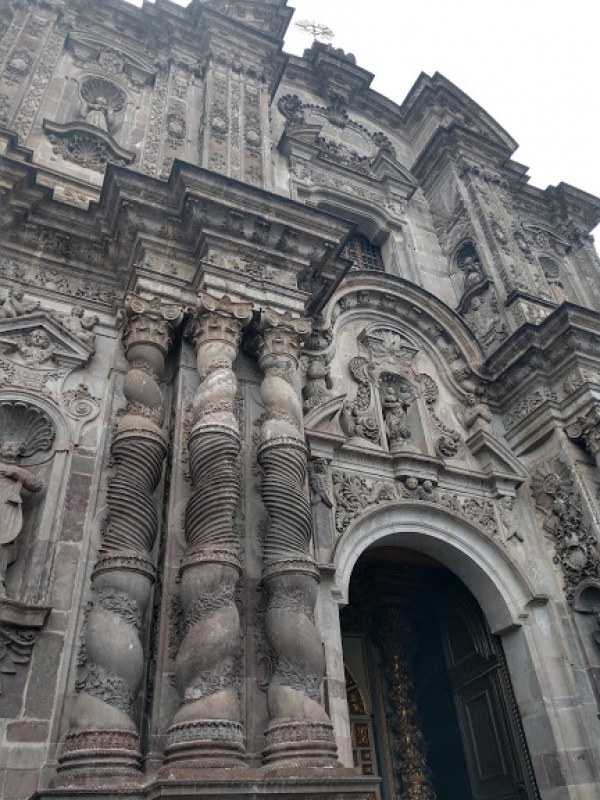
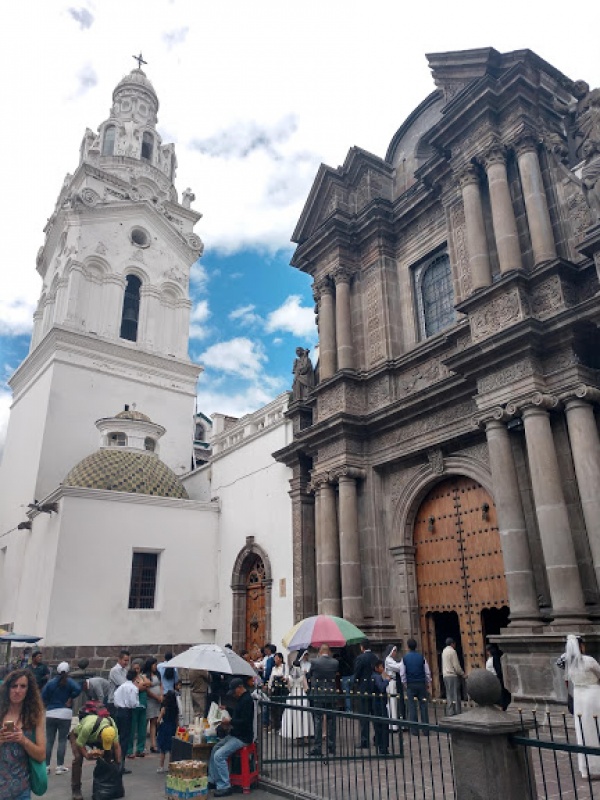 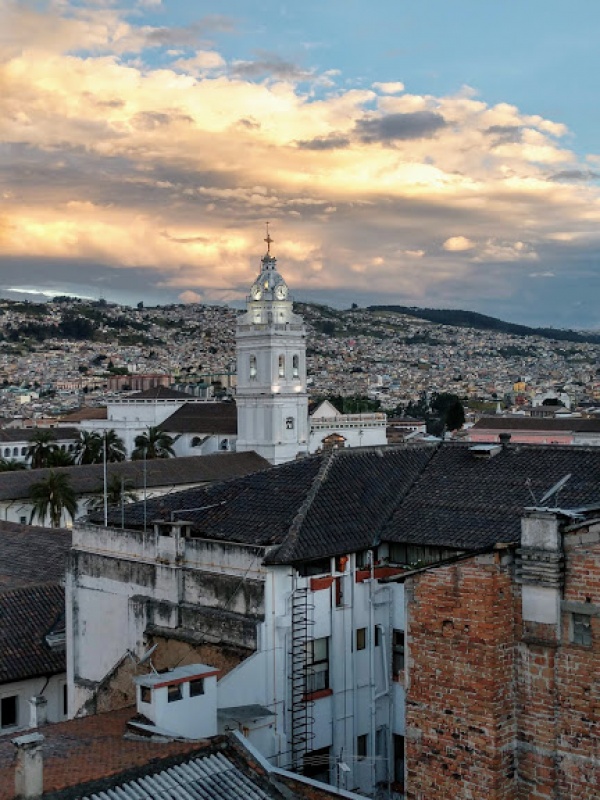
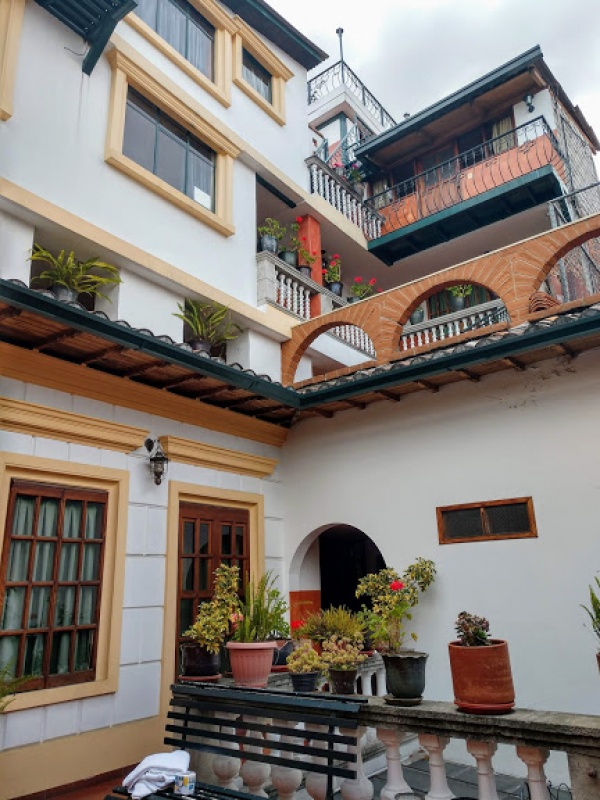
Our group was able to check into Hotel San Francisco in old town Quito around 2 pm and spent the rest of the day exploring Plaza de San Francisco with its many street vendors and famous architecture. We hit the sack relatively early in order to wake up and catch the TeleferiQo to the base of Rucu Pichincha the following morning. Sunday, June 30th - Rucu Pichincha (15,497 feet ~6.3 Miles RT / 2,352 vertical feet) 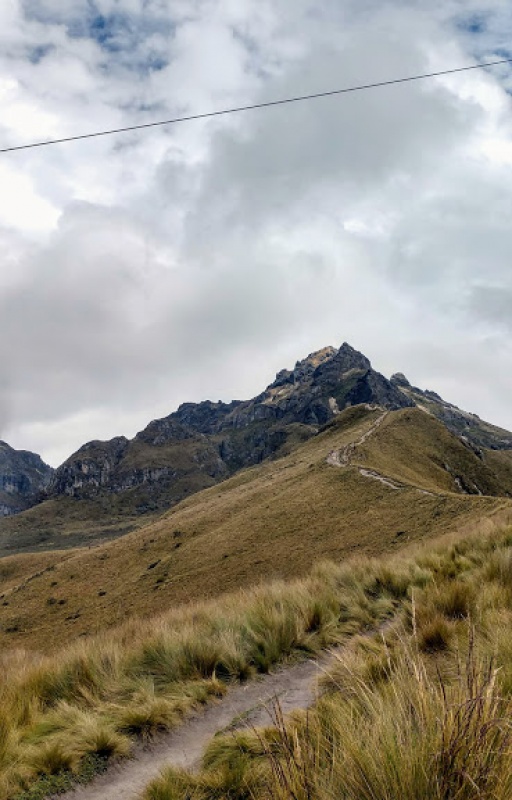
The TeleferiQo doesn’t open until 8 am on Sundays, so it was nice to get some extra sleep that morning. After a brief taxi ride, we arrived at the TeleferiQo. After paying 11 USD, we were able to take the express lane and skip the line to hop in one of the cars. 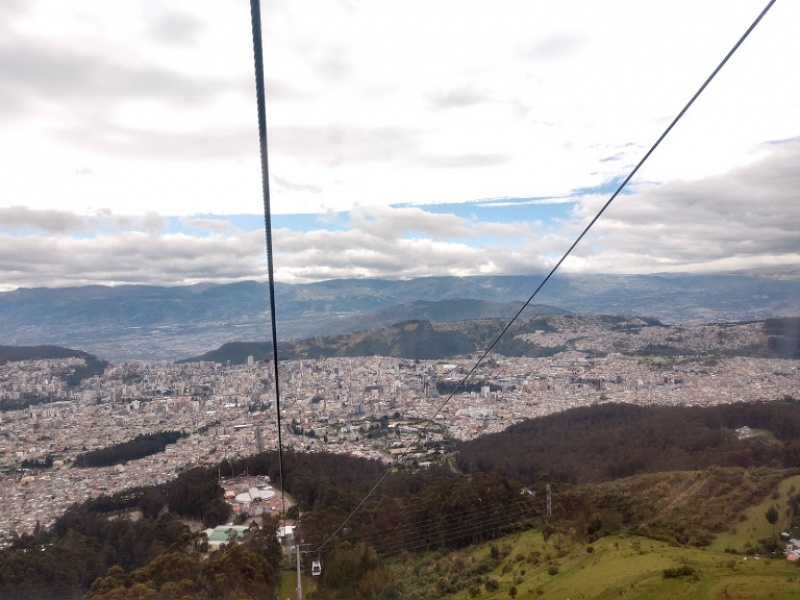 Excitement kicked in as our group knew that our time getting high in Ecuador was finally beginning. Peter and Shelly were both looking forward to getting above 15,000 feet for their first time. After a quick ride, we were at the top of the TeleferiQo and began our approach to Rucu, it’s cumbre slightly shrouded in the clouds. Peter and I were feeling quite spry and moved ahead at a faster pace, letting Shelly move at her own pace. Route finding on Rucu was no issue; the route was straightforward. If anything, it reminded me of a crowded weekend on a 14er, with people wearing anything from jeans to bicycle helmet. Near the summit, there is some class 2+/class 3 scrambling depending on the line you take. Between the amount of people on the mountain, rime ice, and some loose rock, I’d probably wear a helmet next time. After relaxing on the summit for a bit, the clouds finally opened up a little more, allowing us to take more pictures of Quito and the surrounding cloud layers. 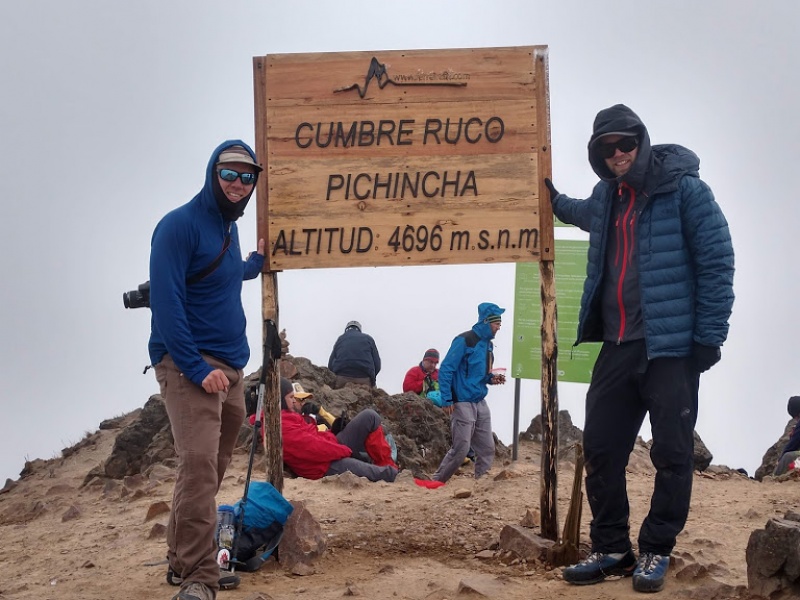 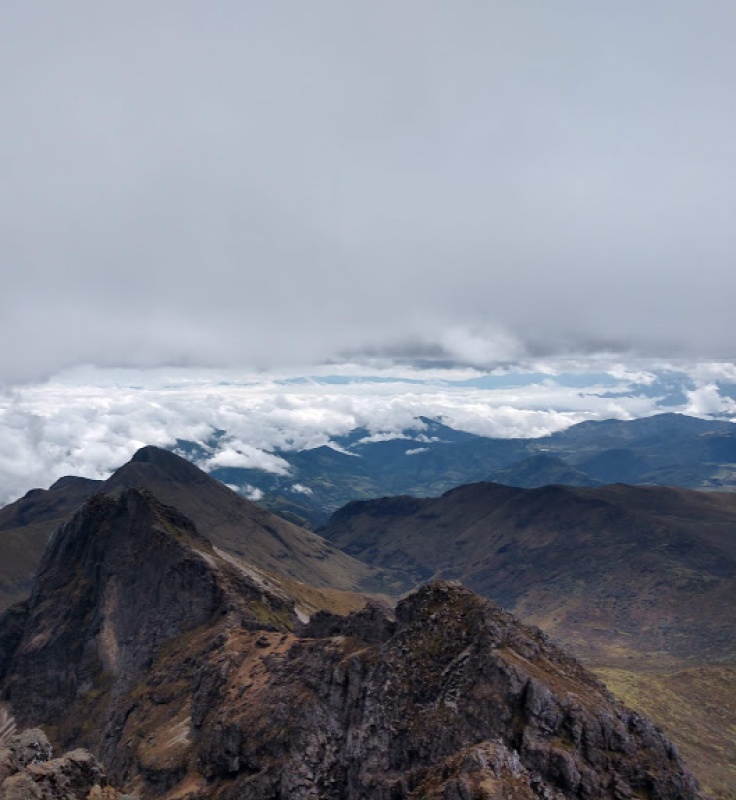 While descending a few hundred feet below the summit, we encountered Shelly, she was struggling with the altitude and called it good at about 15,200 feet. Upon returning to the TeleferiQo we were greeted with commanding views of Cotopaxi across the valley. After an hour or so we hopped in one of the TeleferiQo cars and made our descent. We quickly hailed an extremely nice cab driver, and returned to Hotel San Francisco for dinner and cervezas on the roof. 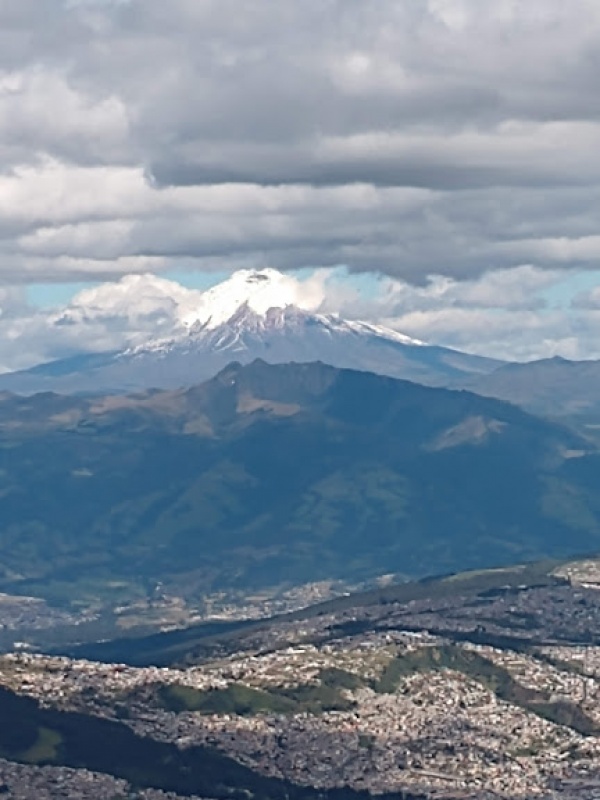
Monday, July 1st (Transfer from Quito > Riobamba > Carihuairazo Refuge) At around 8 am we were picked up by our pre-arranged transport through Ecuador Eco Adventures to their headquarters in Riobamba. The drive takes about 3.5-4 hours, depending on traffic. It was quite scenic driving down the avenue of the volcanoes despite the fact that many of their summits were shrouded in clouds. We arrived at the headquarters in Riobamba, and made our payment of 3,400 USD for our team of 3, a very reasonable price for the accommodations and guides we were provided. In the backyard of the headquarters, there is a backyard with plenty of lines strung up to dry gear. Shelly had her own room, while Peter and I shared a room next door. We each stashed the gear that we wouldn’t need for Carihuairazo in our rooms. After loading up the truck, we started the 2.5 hour drive to our refuge at the base of Carihuairazo. The views of Chimborazo, our ultimate goal, were everything I had hoped for and more. The valleys beneath Chimborazo are extremely lush and green, and fertile from the volcanic soil. 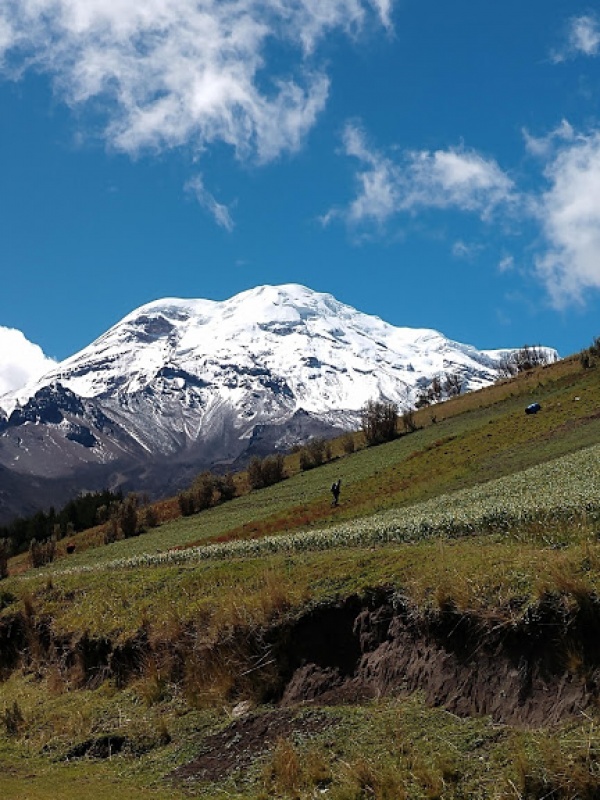
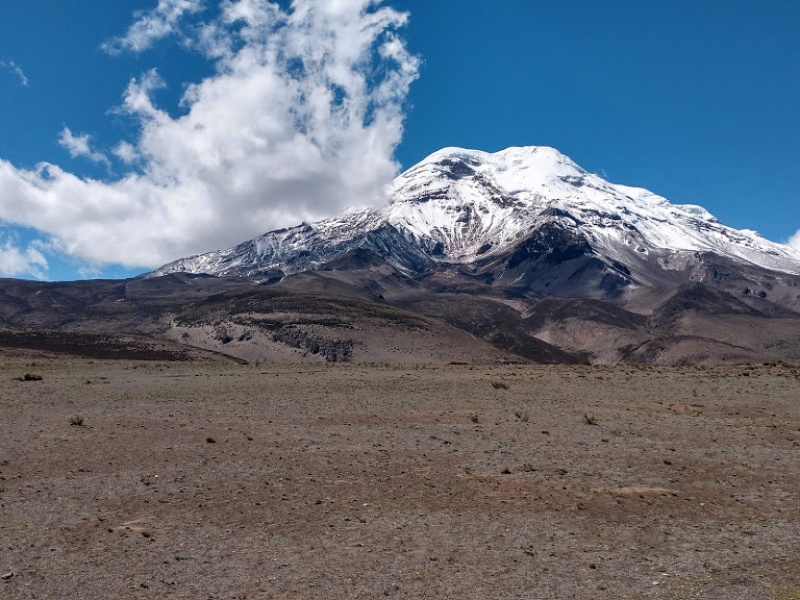
Our arrival to the refugio came before we knew it. We soaked in the views of Chimborazo and chewed on coca leaves to pass the time. It was nice to have service and outlets at this particular refugio. Carihuairazo remained shrouded in the clouds for our entire trip. We enjoyed a delicious dinner of soup, beef and rice, before turning in at an early hour. 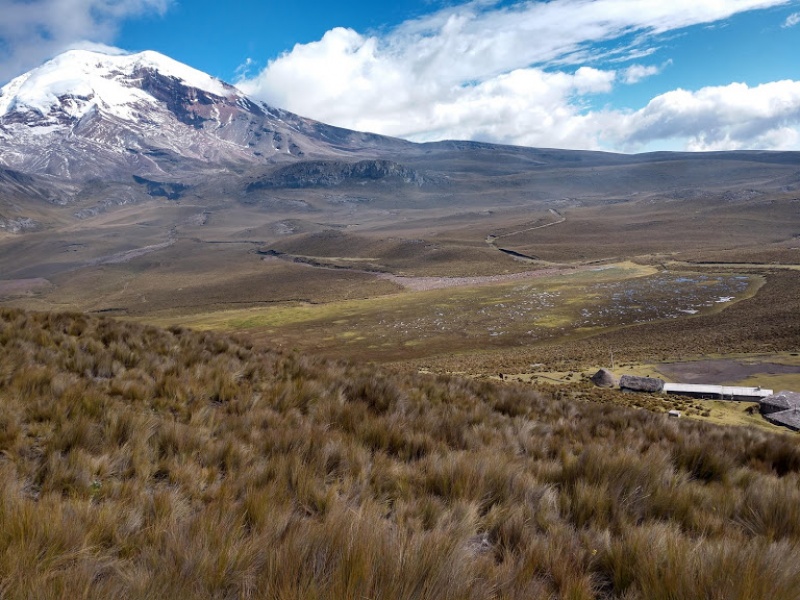
Tuesday, July 2nd - Carihuairazo (16,463 feet, ~10 Miles RT 2,393 vertical feet) 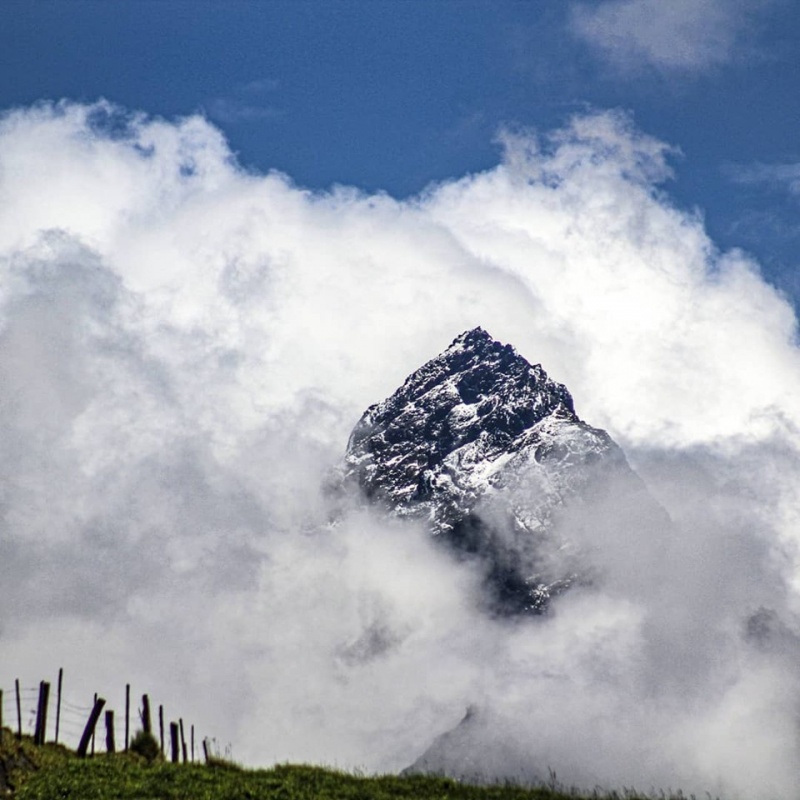
Alpine starts always come early, but I was able to get some decent sleep before our 1 am wake up call. We shared some coffee and a light breakfast before heading out the door. Our approach to Carihuairazo was low angled, but long and muddy. We did our best to avoid the puddles and deep mud as we got closer to the actual mountain. It was a cloudy morning, with stars only peeking out for short moments. Peter and I were lucky enough to catch one of the brightest and closest shooting stars either one of us had ever seen. We finally reached the glacier as the sun started to rise. That being said, we never saw the sun that day until our return to Riobamba, symbolic of the morning we were about to have. Shelly started having altitude problems and threw up shortly upon arriving to the glacier. Peter and I were roped into our guide, Eloy. Shelly was roped in with her guide, Jose. 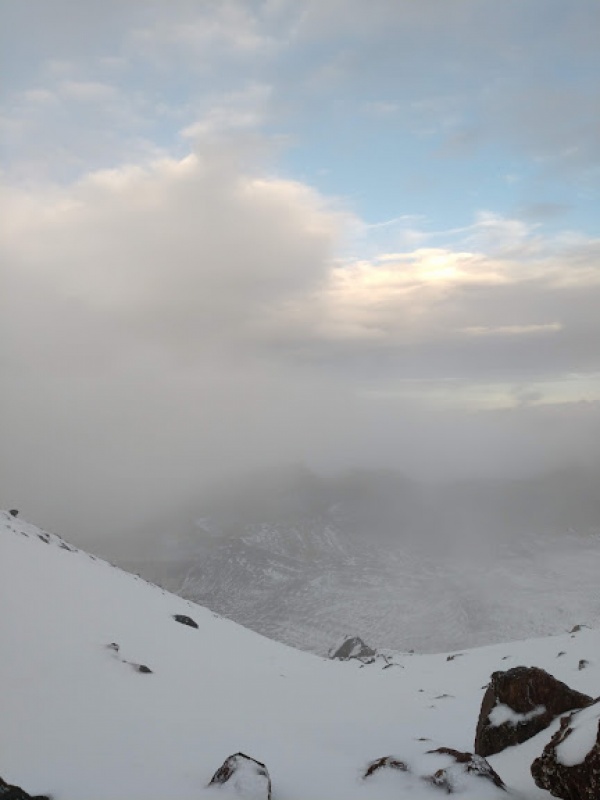 The final few hundred feet to the summit of Carihuairazo are the crux, presenting slopes over 55 degrees with a short chimney climb. Peter and I discussed how we would have much rather been unroped for this. We topped out and were snapping some photos when we were excited to see Shelly and her guide make the summit, due to her issues with the altitude. 
More group photos were taken before we began our descent. Jose any Shelly made their way down through the crux and to what I thought was a safe area. As I began descending facing in, Peter stated that he witnessed Shelly and her guide fall. Adrenaline kicked in and we carefully made our way down the crux and on to less steep slopes below, calling out their names. We could here Jose yelling in pain, and quickly made our way down to the pair. It was apparent that they fell at least 200 feet, obviously unable to arrest the fall. Some gear was strewn about along with blood on the snow. Shelly noted that she believed her ankle was broken. Eloy and Jose started making calls about the accident, and called for ambulances and two horses from the refugio. Jose, Shelly, and Eloy’s backpacks/gear were distributed between Peter and myself. Eloy carried Shelly on his back, and was from then on dubbed “Superman” by our group. We slowly and carefully made our way down the mountain. Visibility was low, and at points the stress of the situation made the time drag slowly. I offered Eloy my already tattered backpack to be turned into a bag to carry Shelly, with two holes in the bottom for her legs, but he kept right on carrying her. Jose struggled on his own to make his way down. After a few hours of slowly descending, we were on the trail and the two horses finally appeared through the mist, along with others to help. Shelly and Jose were each placed on their own horse and from there back to the refuge our paced improved greatly. Similar to the process I had witnessed in Bolivia, the parade of spectators that followed the bomberos were a bit of a turn off with their constant photographs, but we were glad to have Shelly and Jose off the mountain. Emotions were running a bit high as we all packed up our equipment and caravaned back to the ER in Riobamba. Shelly indeed broke her ankle, and underwent surgery that evening, needing 5 screws to help realign the structure of her bones. Jose was better off, sustaining an injury to his hand from a crampon, and he was luckily able to walk despite an injury to his knee. Tuesday was a long and draining day, and a major bummer to happen before Cotopaxi and Chimborazo. After making sure our climbing partner was taken care of, Peter and I had beers, dinner and went to bed before heading off to Cotopaxi the next day. Wednesday, July 3rd - (Transfer to Jose Rivas Refuge - 15,953 feet) Despite the previous day’s events and ensuing poor night’s sleep. Peter and I woke up and packed our gear for Cotopaxi. I brought my plastic Koflach boots along for Cotopaxi after having cold feet when travelling higher than 6,000 meters in Bolivia last year. Surprisingly, or maybe not, I found the climbing in Ecuador to be much warmer, with leather boots and softshells being sufficient for summiting Cotopaxi. I believe the warmer conditions have to be related these peaks being in such close proximity to the equator. Following a few hours drive, we were finally in Cotopaxi National Park and were greeted with commanding views of the volcano and its many lahar flows below the glaciated peak. We ate a quick lunch with delicious ahi and drove up to the trailhead for the refugio. 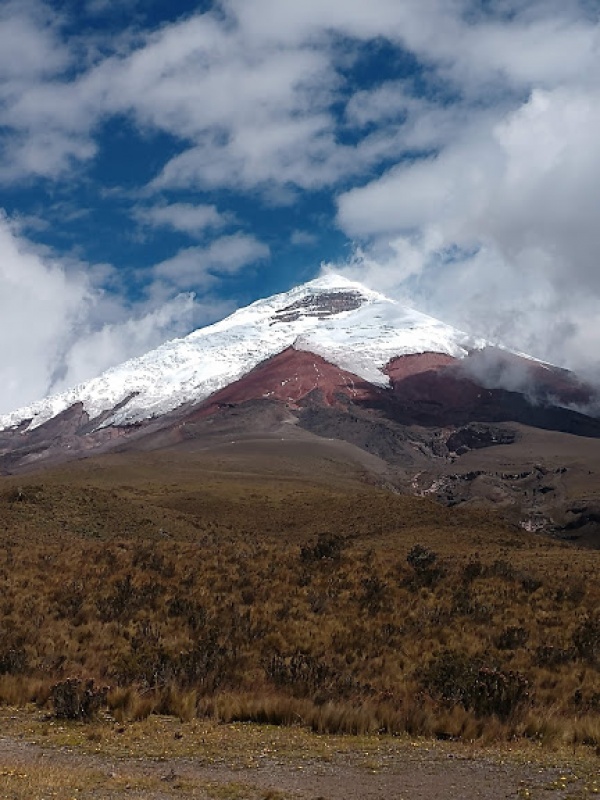
The Jose Rivas refuge sits just under 16,000 feet and is about a 30-40 minute hike from the parking area depending on your fitness and acclimatization. This refuge is easily THE nicest refuge I have stayed in while climbing the Andes. It can accomodate upwards of 100 people, but luckily there were only a handful of other parties attempting the climb the following morning. After a delicious dinner with fudge cake as a desert, we hit the sack for a midnight wake up.
Thursday, July 4nd - Cotopaxi (5,897 meters / 19,347 feet) Patricio accompanied us for Cotopaxi this day, and he was solid. Peter, Eloy, Patricio, and myself were the last party to leave the refugio, but were the first and one of the only parties to summit that morning besides one other client and his guide. Patricio commented numerous times about how impressed he was with our speed. The climb itself was straightforward, with a well travelled crampon track weaving its way up the mountain, finding the safest passage to avoid seracs and crevasses. The smell of sulphur was overwhelming, especially on the summit crater. In hindsight, I wish we waited for the sun to rise while on the summit and just have dealt with the cold.
Our descent was easily one of my favorite experiences in the mountains. A far cry from the previous day. Seeing the sunrise over Cayambe, Antisana, and the Illiniza pair was stunning. We all felt great, and made great time getting down despite taking numerous breaks for photos. It was a morning for the books. I highly recommend Cotopaxi as a must do if you ever visit the Andes of Ecuador.
By 8 am, we were back to the trailhead with all of our gear. We made our way back to Riobamba for some much needed relaxation and to see how Shelly was doing since being discharged that morning. Shelly was in good spirits and congratulated us on our summit bid. Peter and I made a grocery/beer run, and the rest of the evening was spent relaxing and reveling in the morning’s success.
Friday, July 5th (Riobamba Rest Day) To our surprise, Peter and I were awoke at 8 am to being told that we needed to start packing for Chimborazo. There was obviously some sort of miscommunication regarding the agreed upon itinerary. After showing them our itinerary again and explaining our need for a day off from travel, the issue was quickly resolved. The day was spent lounging around in bed, eating and drinking lots of fluids, and some catch-up time with my girlfriend back in the states. Very enjoyable and relaxing day all around. Saturday, July 6th (Transfer to Chakana Refuge) On this day Peter and I were transferred to the Chakana lodge on the outskirts of the Chimborazo National Park. The weather was not good. Winds were blowing so strong that we were worried that the roof would be completely ripped off the ludge. Luckily, it didn’t. Chimborazo was shrouded in dark clouds all day.
Sunday, July 7th (Transfer to Carrel Refugio) At four in the afternoon, Eloy and Santiago, our final guide arrived to the Chakana lodge. Peter and I were going stir crazy at this point. For my next expedition, I plan to bring cards, books, and other items to help pass the time when the weather is poor. The previous day and a half was open for Peter and I hike/acclimatize at our choosing, but the wind was so strong that we hardly left the refuge. If you ever visit Chakana, bring a sport rack because there is a large crag nearby. Upon finally arriving at the Carrel Refugio at the base of Chimborazo, we made our bunks for the night and visited the memorial at the base of the mountain. It was a unique place and grim to see how recent some of the deaths were. Chimborazo’s standard route has become more dangerous over recent years due to climate change, and other variables that cause rockfall.
We turned in extremely early due to a 10 pm start. When we went to bed, winds were still strong, and Chimborazo was still slated in the “biento blanco” or white wind as the locals call it. Monday July 8th, (Chimborazo attempt - high point 17,500 feet) Technically we began on Sunday night, with 10 pm being the earliest I have ever began a climb. I tried to push for a later start time due to our strong pace on Cotopaxi, but it wouldn’t have made a difference either way. Upon leaving the refugio, we were able to see stars which brought us hope. The stars quickly vanished as we climbed into the mist. For the entire ascent, minus a few thirty second windows, we were climbing in blowing snow. Visibility sucked. I need contacts for my next climb in those conditions, glasses were no good. We continued as the snowfall began to become heavier and the wind, stronger. Just before the traverse under the “castle” we all decided to abandon the attempt. It didn’t make sense to continue in deteriorating conditions when we had so much mountain ahead.
During the descent, the weather became even worse, and the rocks were covered in verglas. We made the right call and slowly made our way down towards the refugio. By the time we returned, visibility was so low it was difficult to even find the refugio.Every party abandoned their attempt that morning, and we returned to the refuge after 2 am, with our gear covered in rime and soaked. I was able to fall asleep very quickly. We then woke up at 7 am to even more fresh snow and made our way back to Riobamba.
We returned to Riobamba and let our gear air out as Shelly returned to the hospital to get a new cast. We left Riobamba at around 3 pm and made the slow trek back to Quito. Tuesday, July 9th (Peter’s Birthday / New Quito / Mitad Del Mundo) We stayed at the Hotel Antinea in new Quito for these few nights and had a great day celebrating Peter’s birthday. New Quito is extremely different from Old Quito’s basilicas, it is much more modern and has plenty of trouble to offer for those seeking it. Additionally, visited the equator or “Mitad Del Mundo” which was one of the better tourist traps I have ever visited. It is located about 40 minutes outside Quito and entry was only 5 USD per person. 
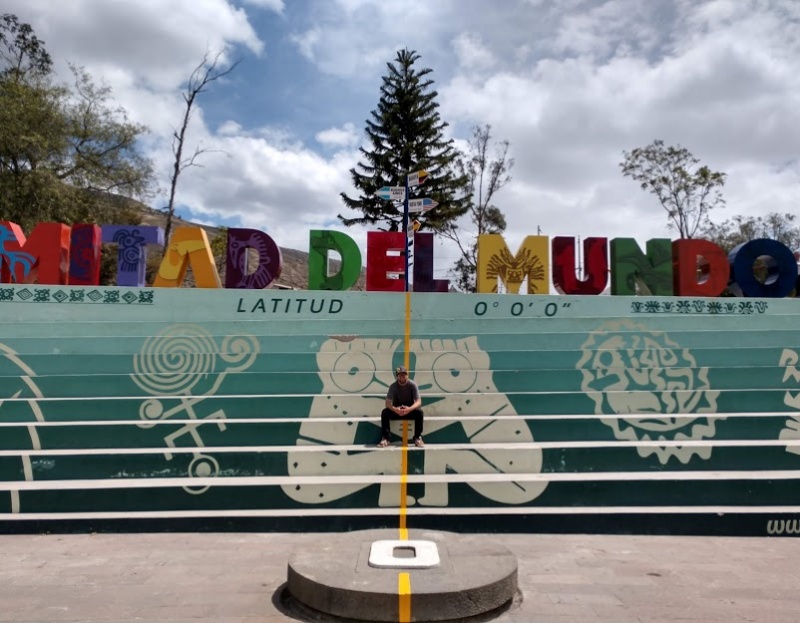
After doing the tourist thing for a bit, we dined on local Ecuadorian cuisine. The ceviche was to die for. Peter enjoyed some Cuy (Guinea Pig) while I enjoyed steak. We delivered Shelly tons of food and we all relaxed before our 2 am flight the next day. Wednesday, July 10th (Return to DIA) We departed Quito, followed by another layover in Panama City before returning to Denver. It was a smooth and successful travel day! In Conclusion Ecuador is amazing. It has such a diverse landscape, wonderful food and amazing people. I plan to return to climb Chimborazo one day, just accounting more time for a solid weather/condition window. I look forward to returning to the Andes again next summer. Either Huaraz or a return to La Paz is in the works!Don’t hesitate to reach out with any questions or want any helpful information about climbing in Ecuador. I’d be happy to help! If you want to see more pictures, feel free to visit my Instagram page: @couloir_forbin_ or https://www.instagram.com/couloir_forbin_/ Peter’s: @postholepete or https://www.instagram.com/postholepete/ |
| Comments or Questions | |||
|---|---|---|---|
|
Caution: The information contained in this report may not be accurate and should not be the only resource used in preparation for your climb. Failure to have the necessary experience, physical conditioning, supplies or equipment can result in injury or death. 14ers.com and the author(s) of this report provide no warranties, either express or implied, that the information provided is accurate or reliable. By using the information provided, you agree to indemnify and hold harmless 14ers.com and the report author(s) with respect to any claims and demands against them, including any attorney fees and expenses. Please read the 14ers.com Safety and Disclaimer pages for more information.
Please respect private property: 14ers.com supports the rights of private landowners to determine how and by whom their land will be used. In Colorado, it is your responsibility to determine if land is private and to obtain the appropriate permission before entering the property.
